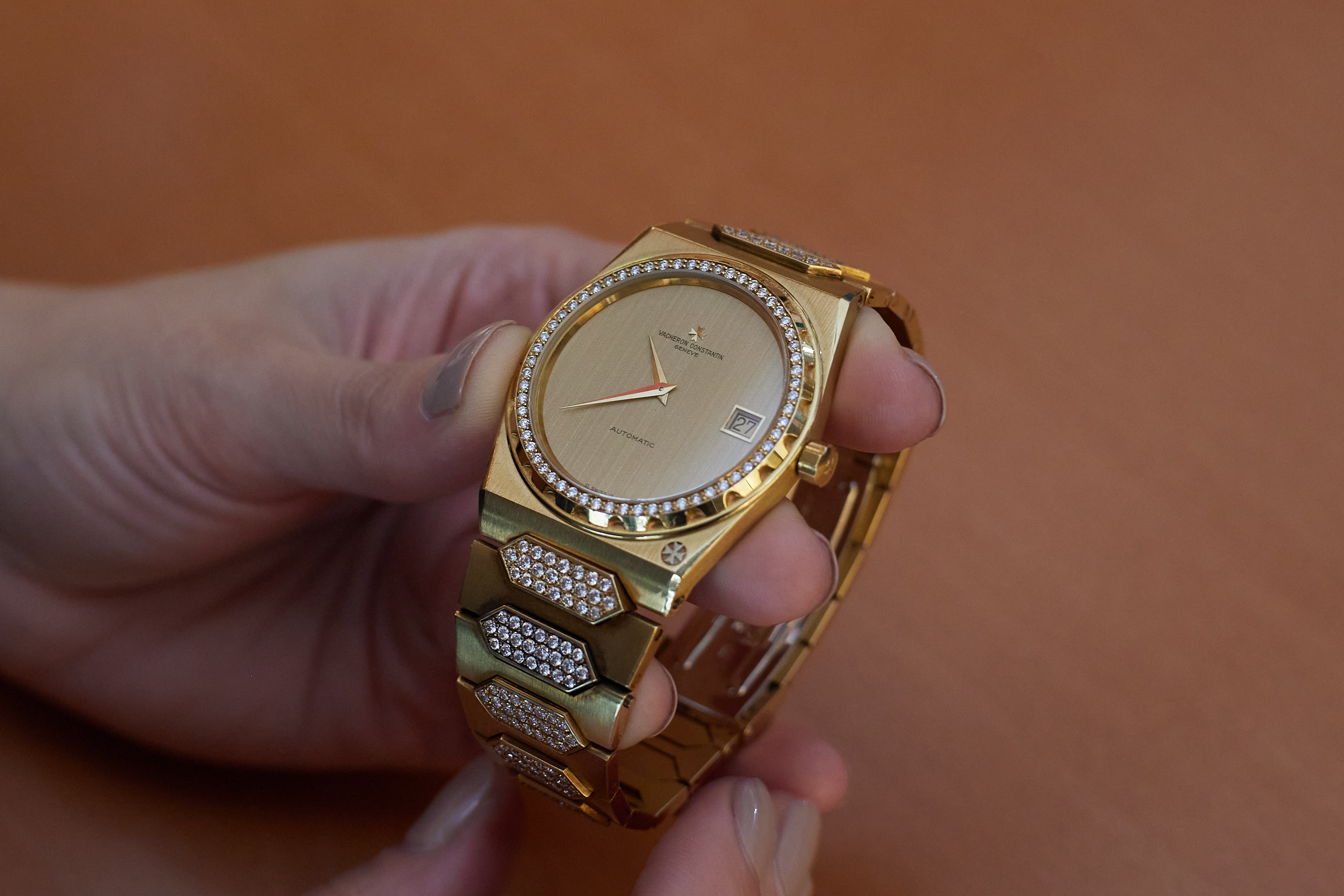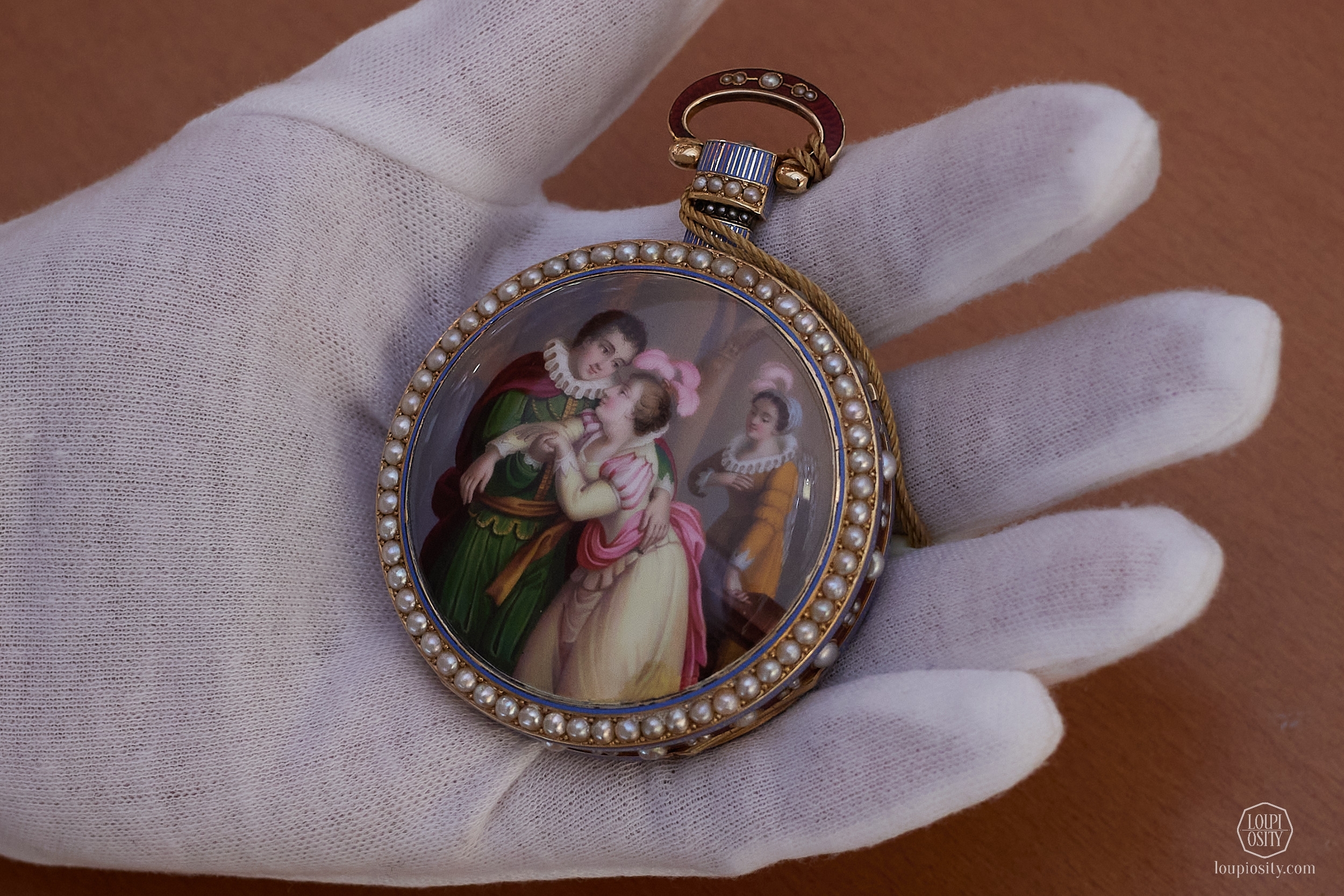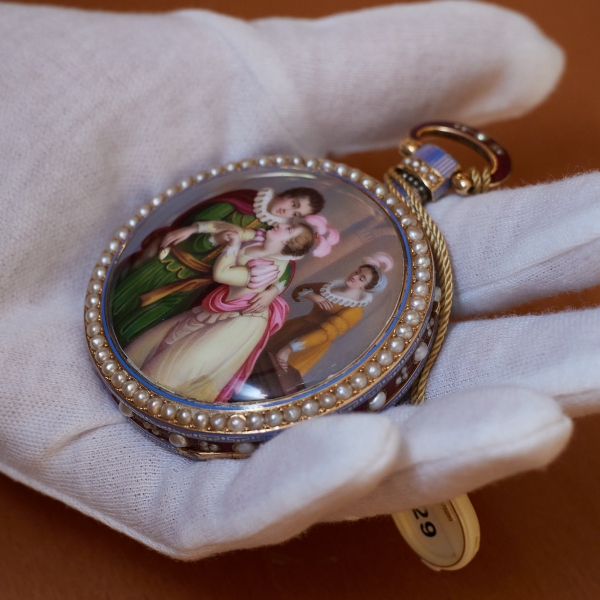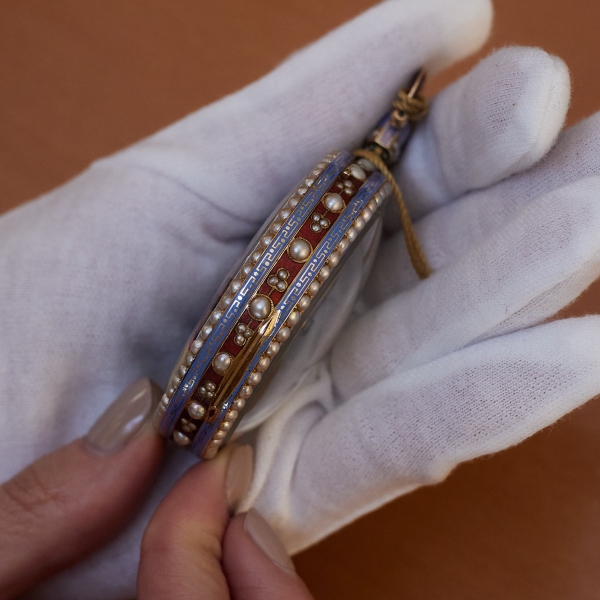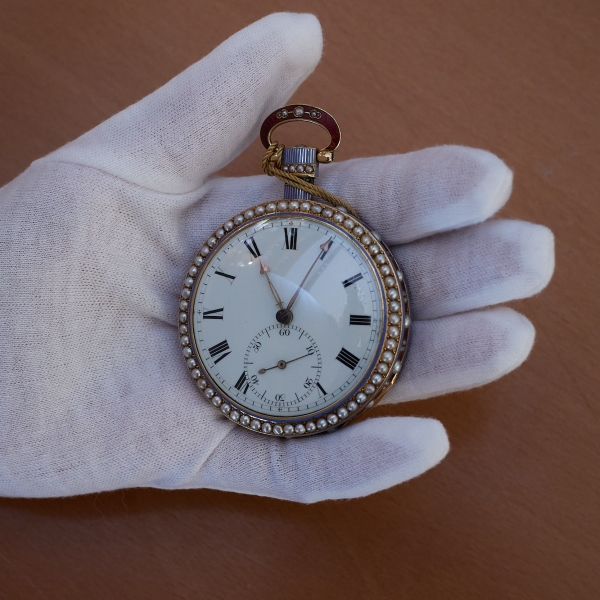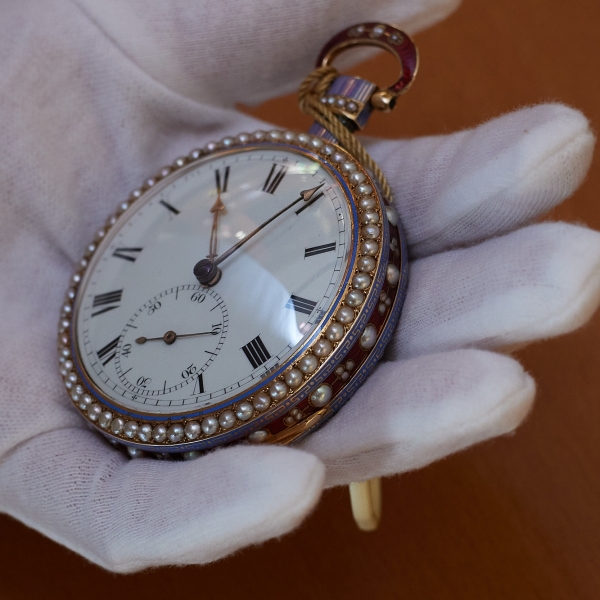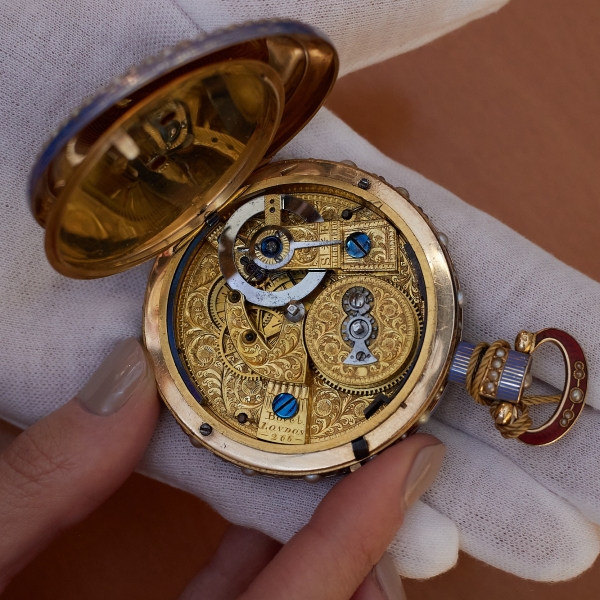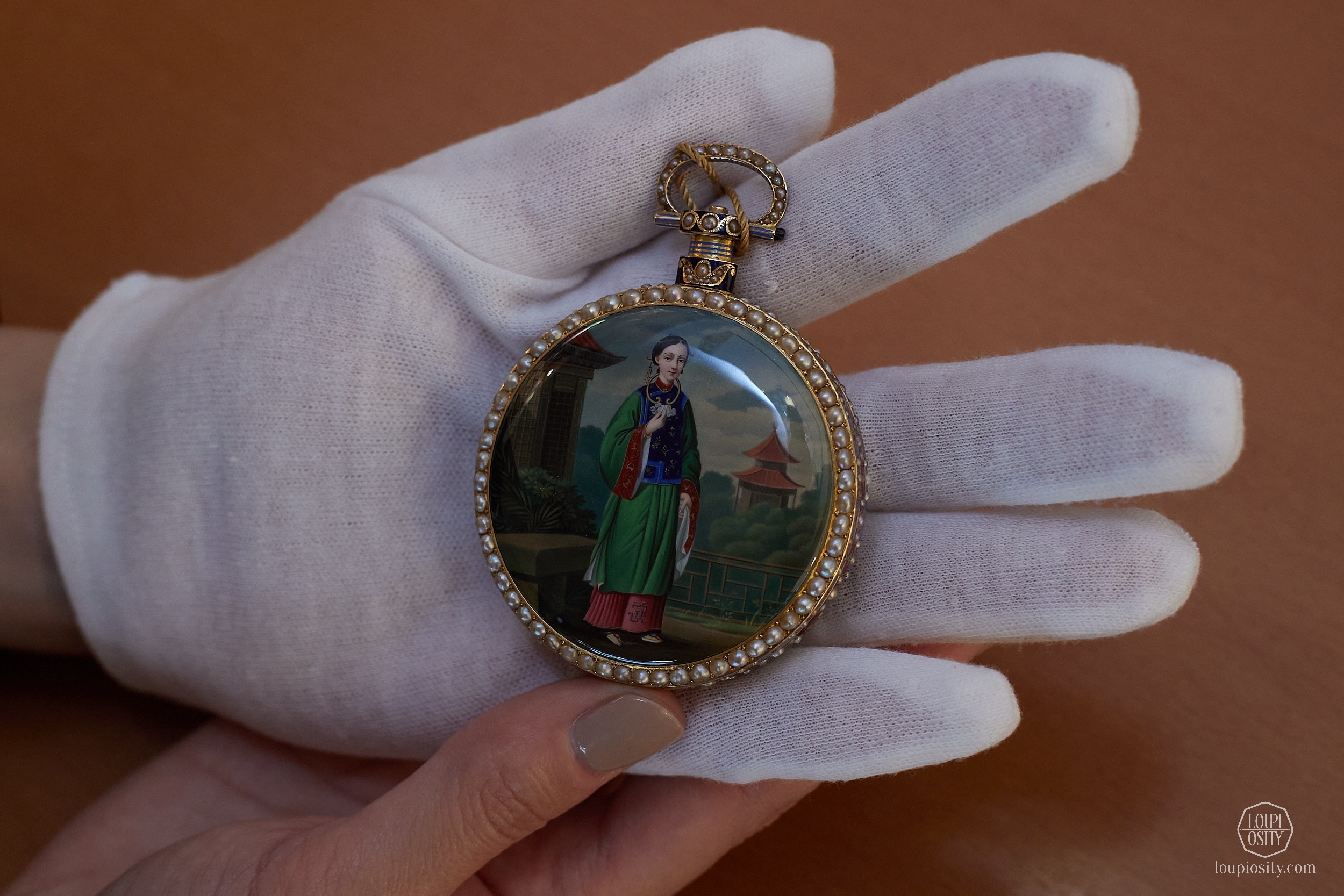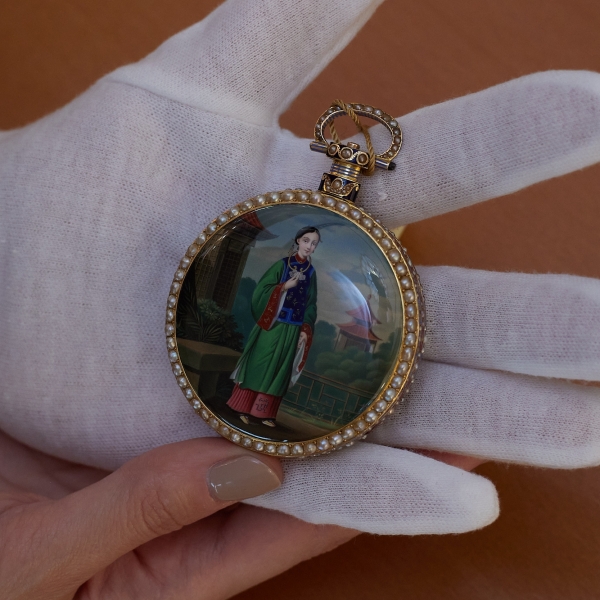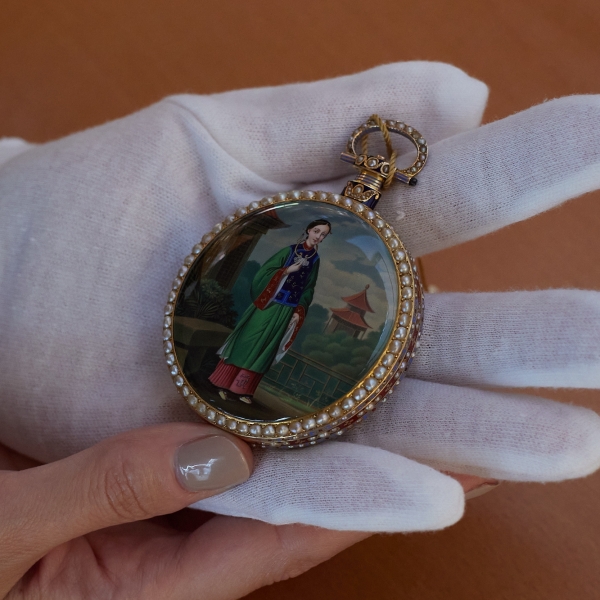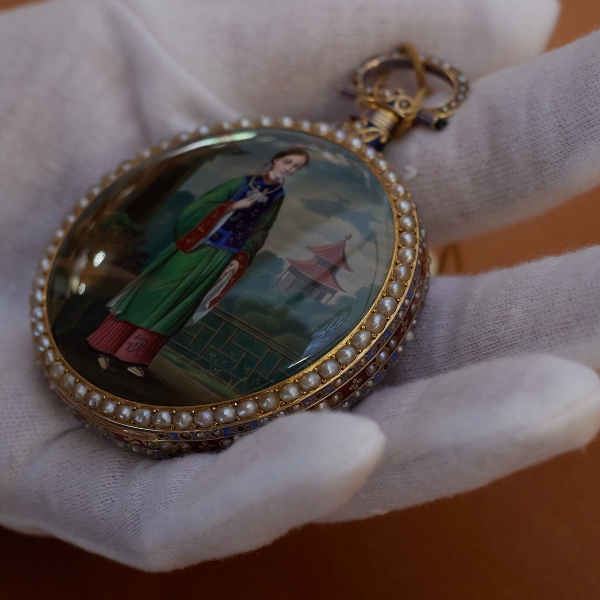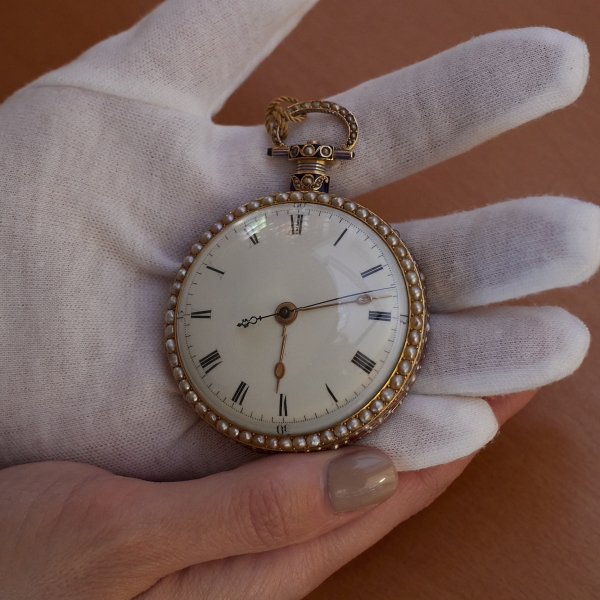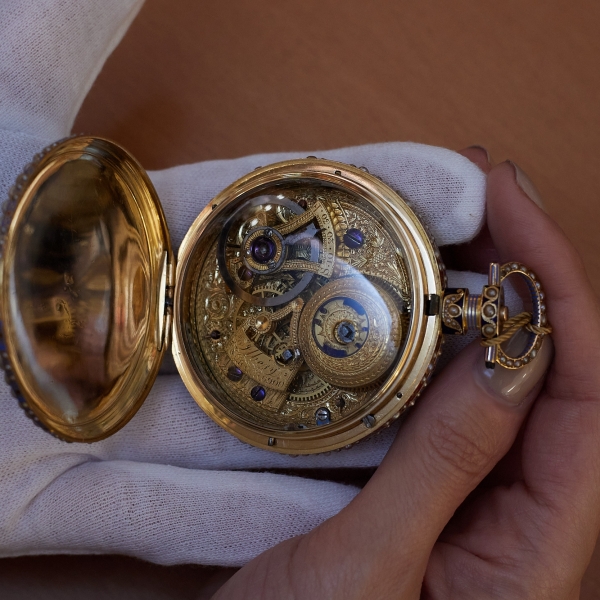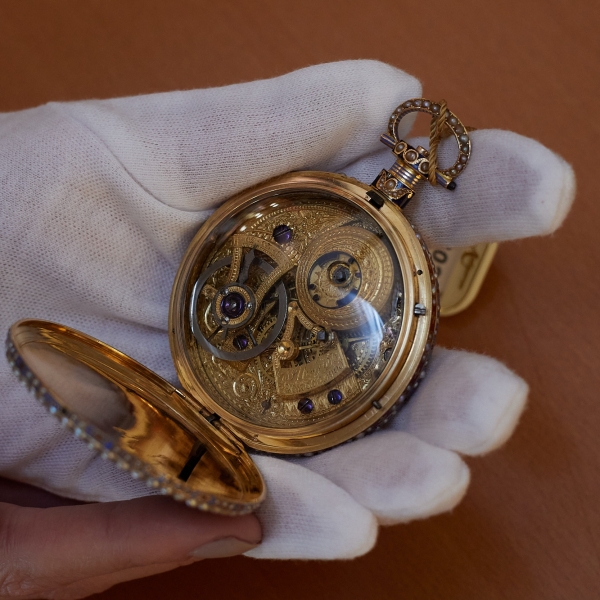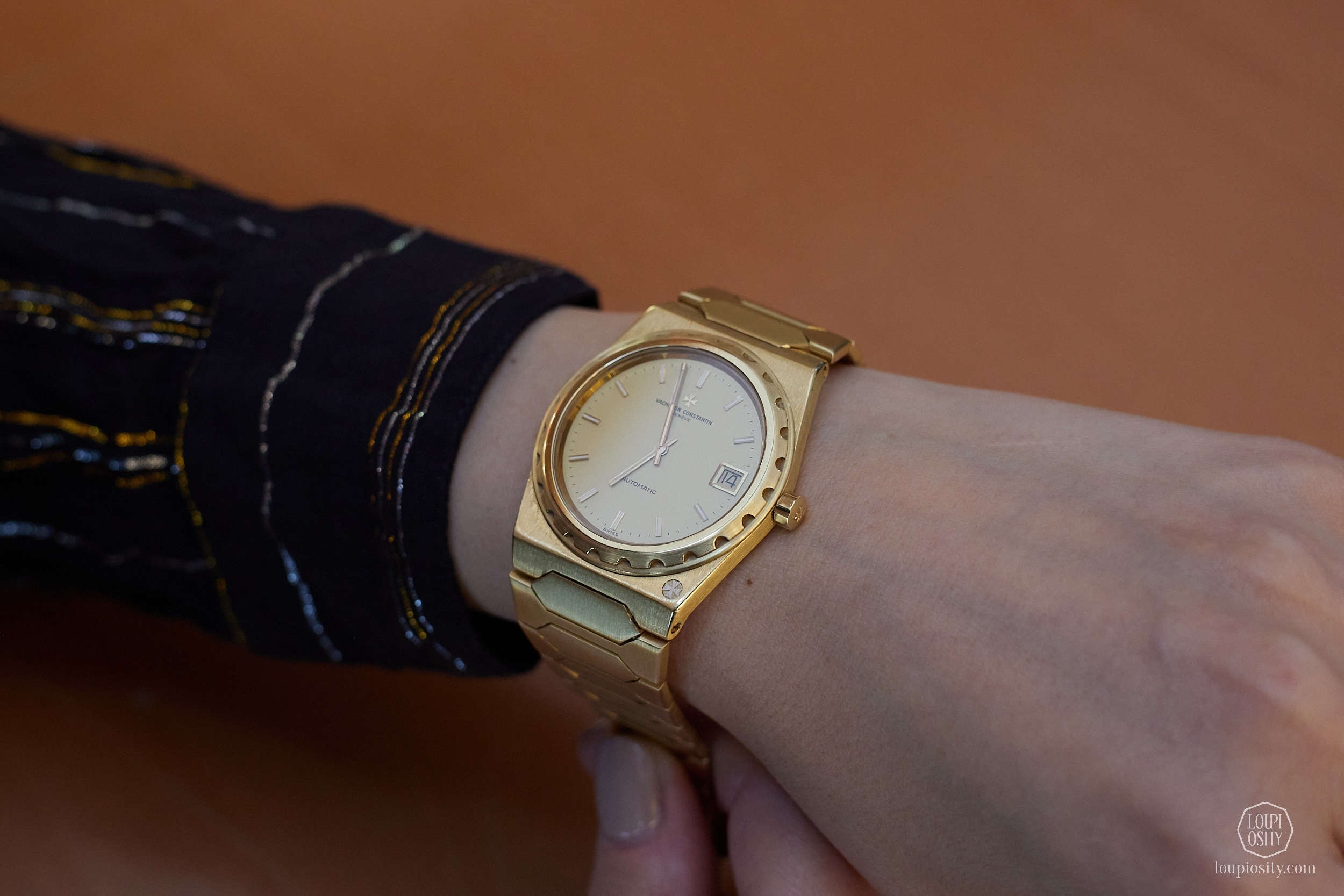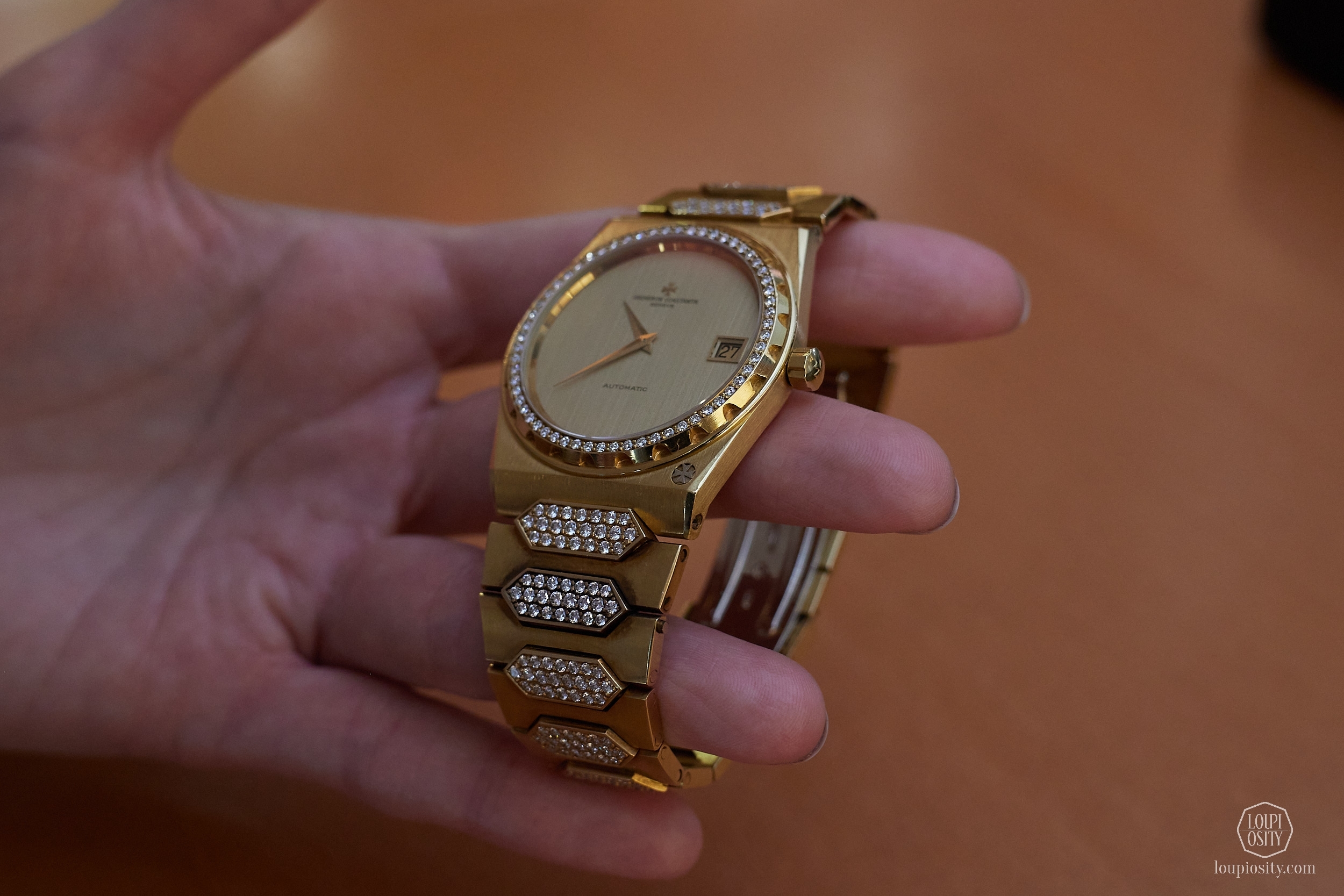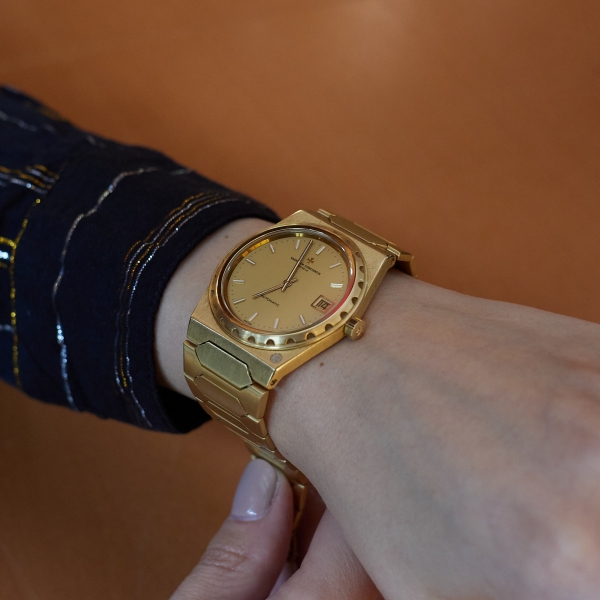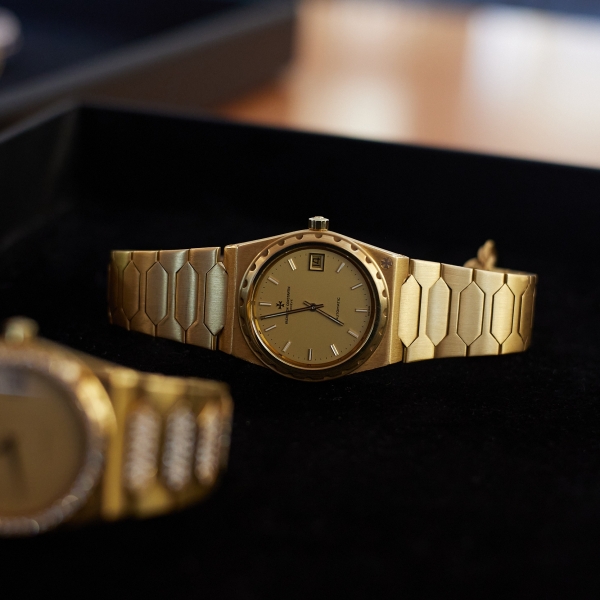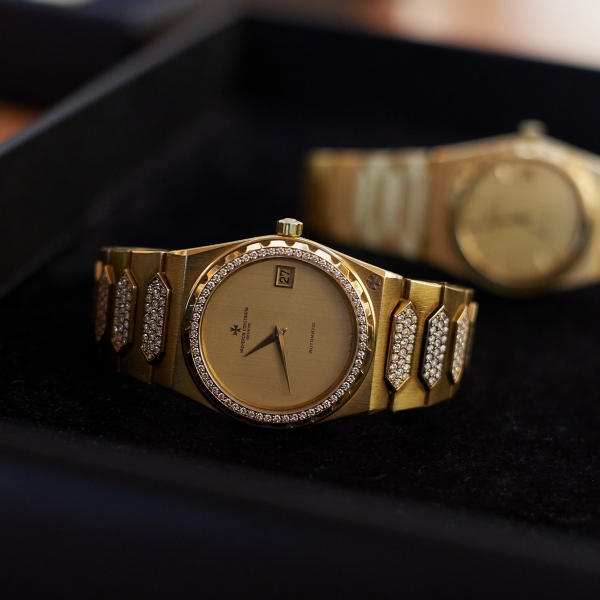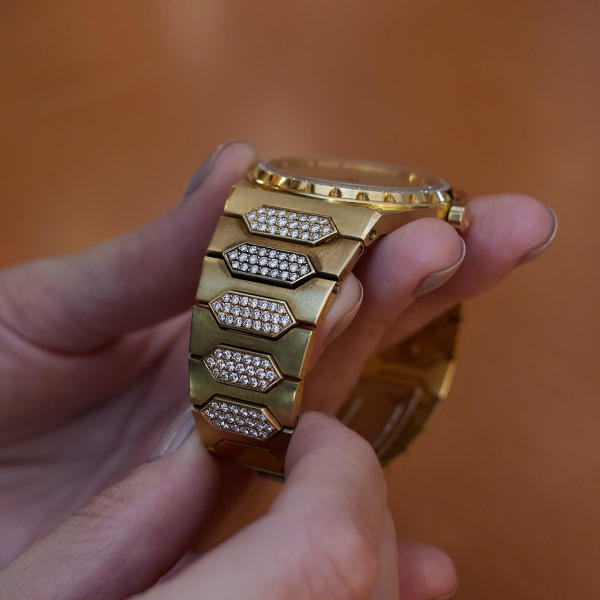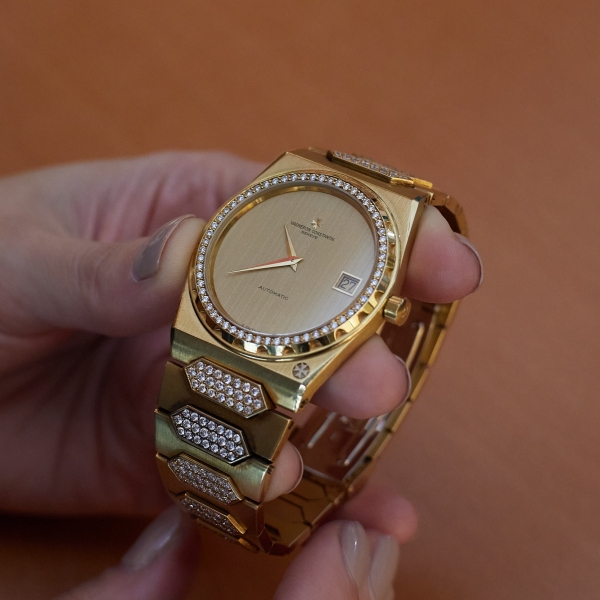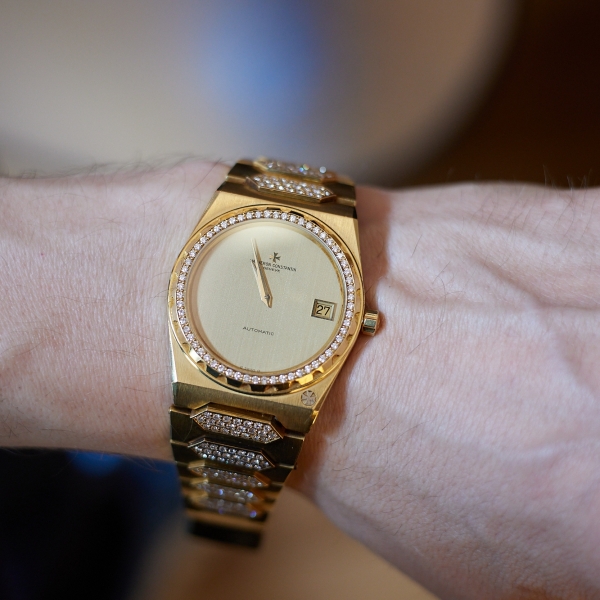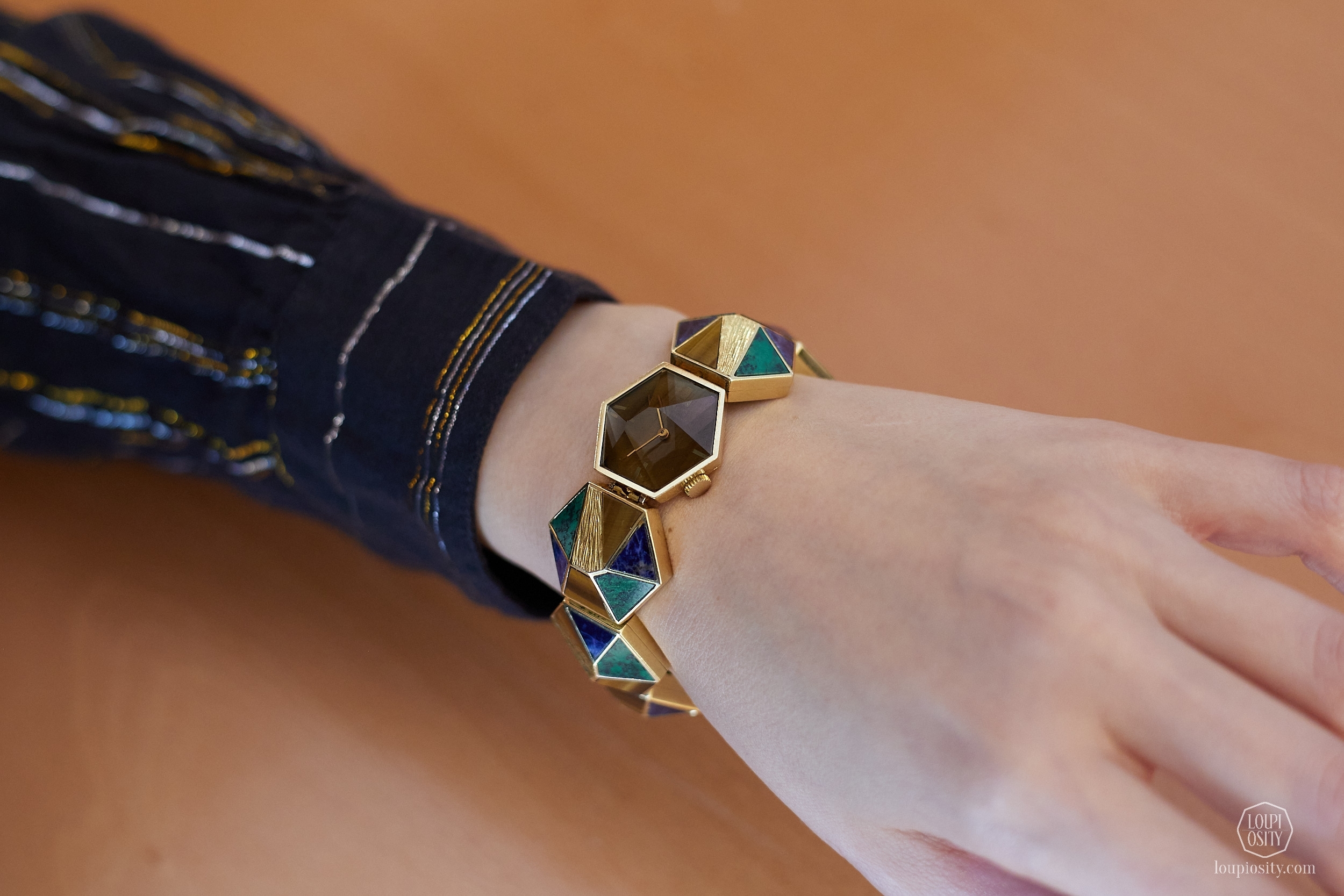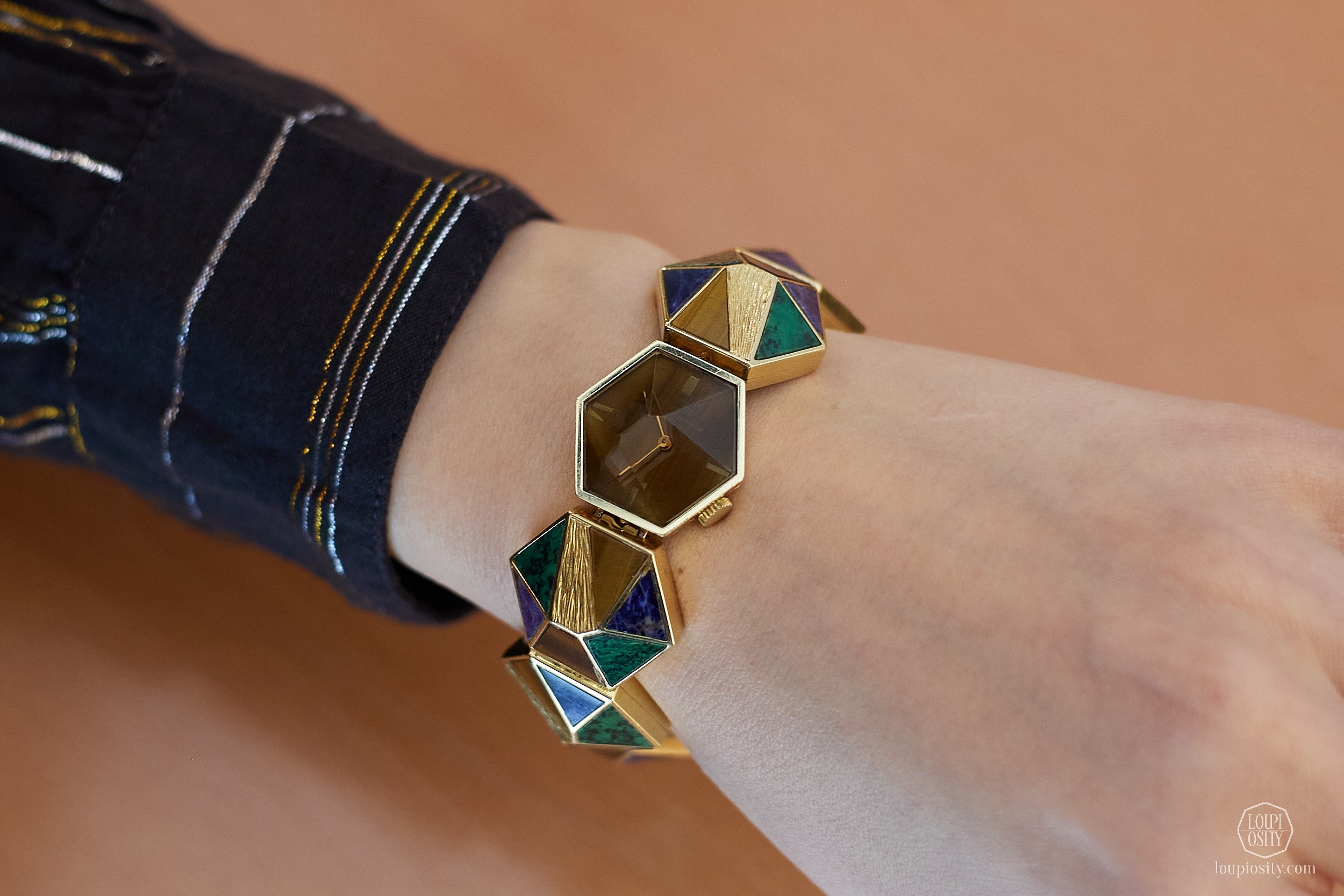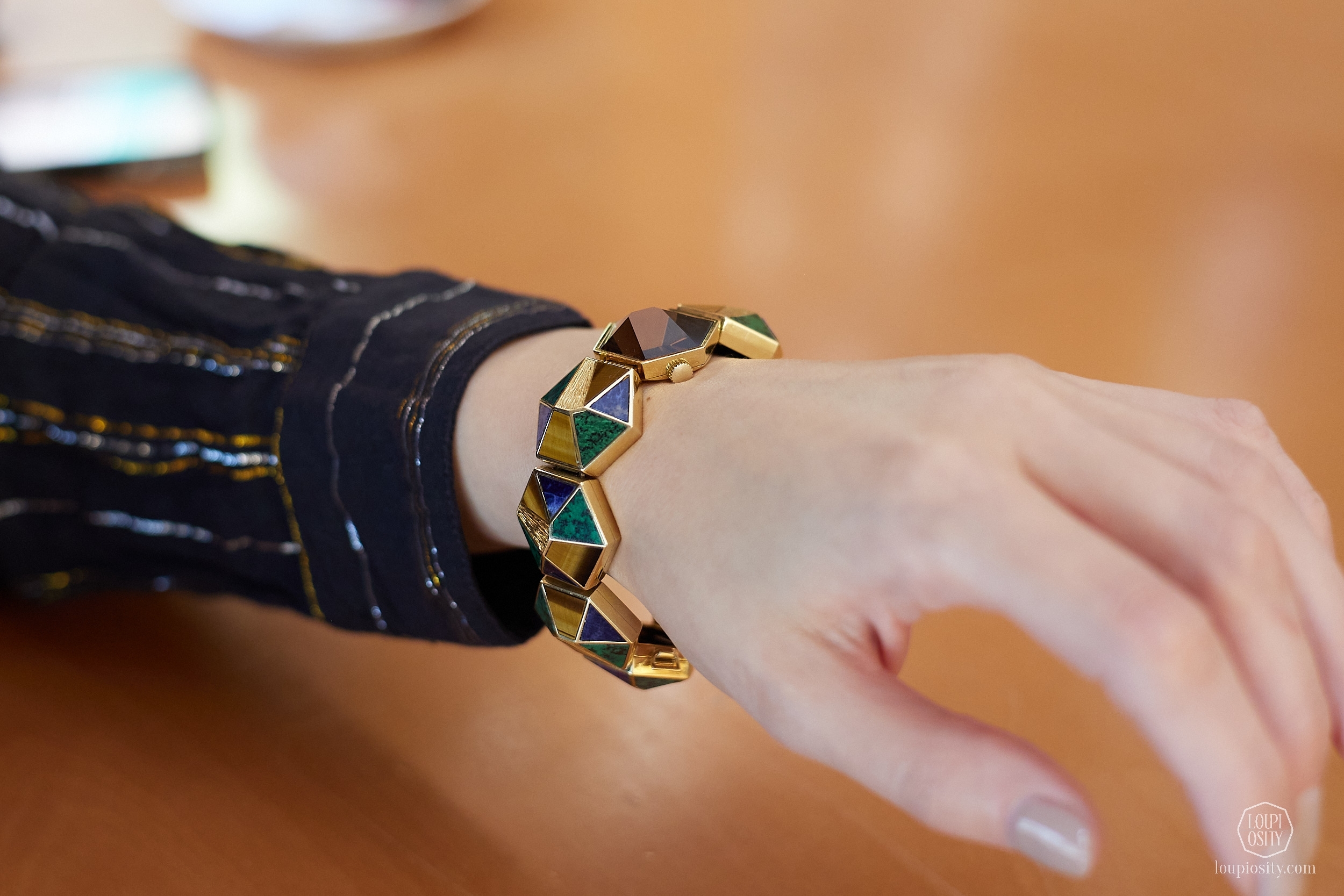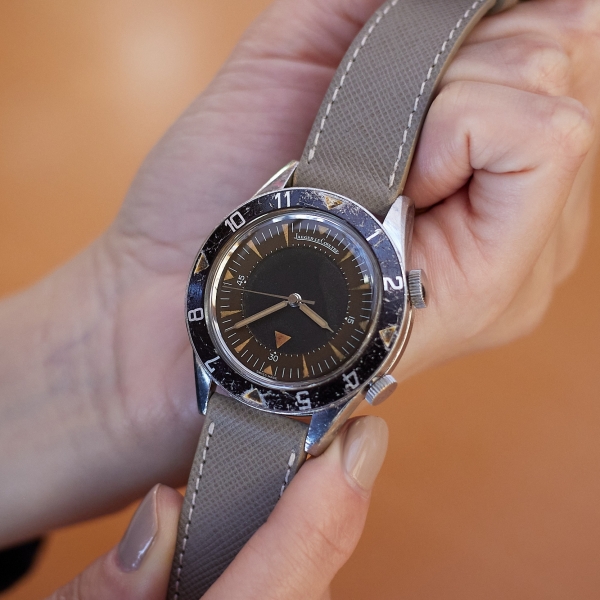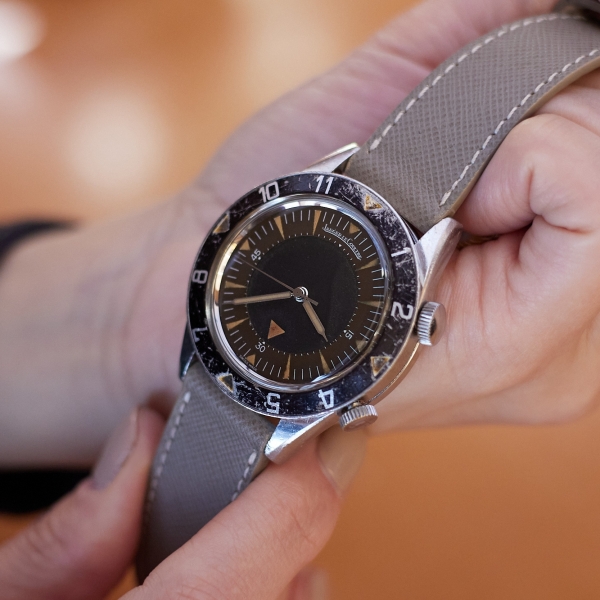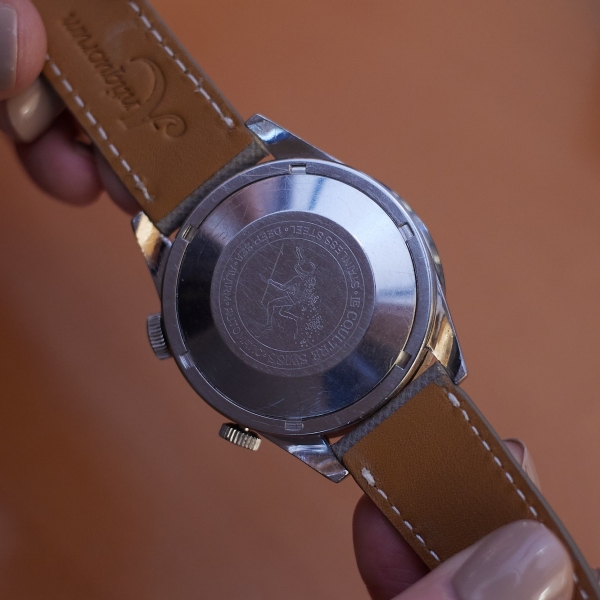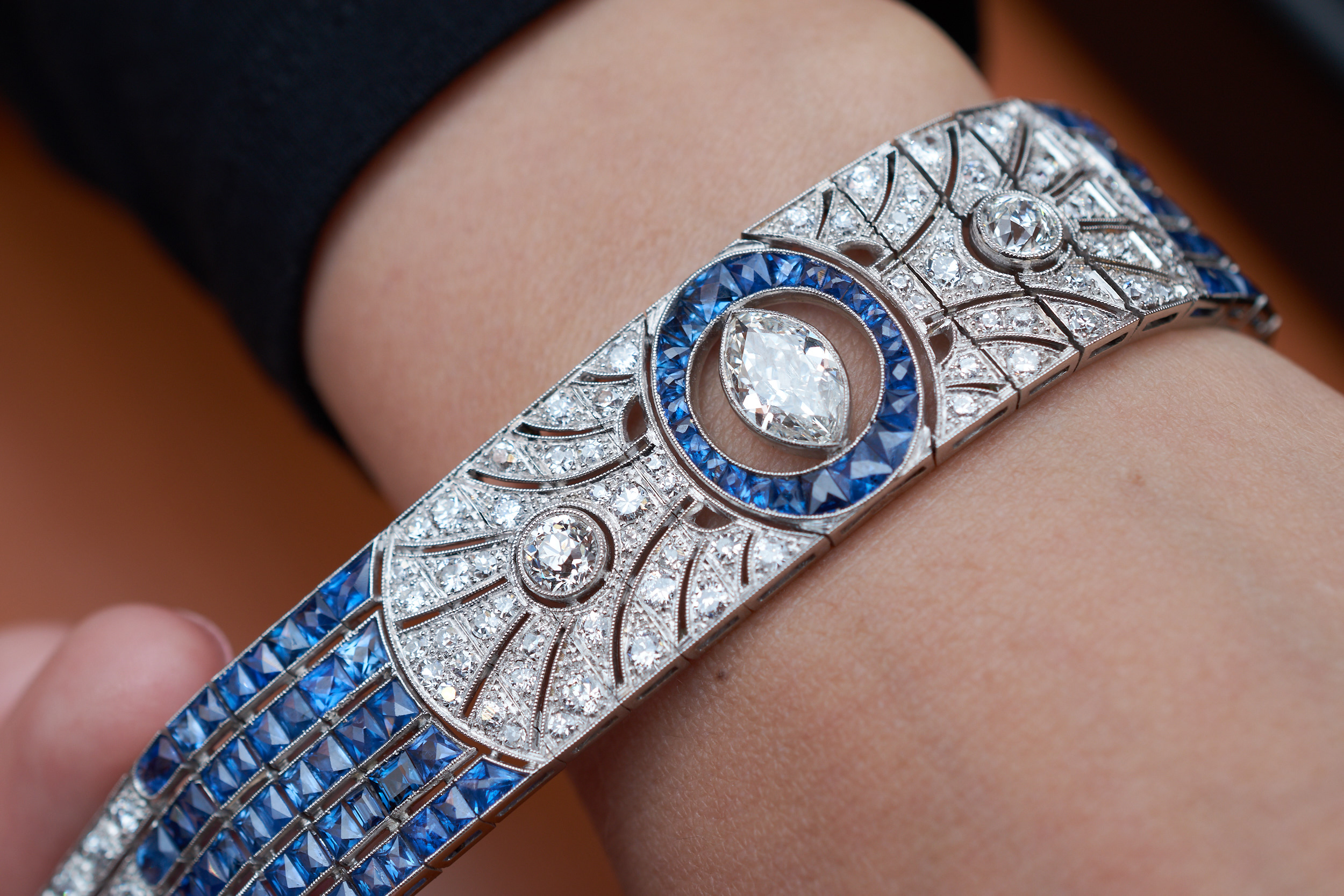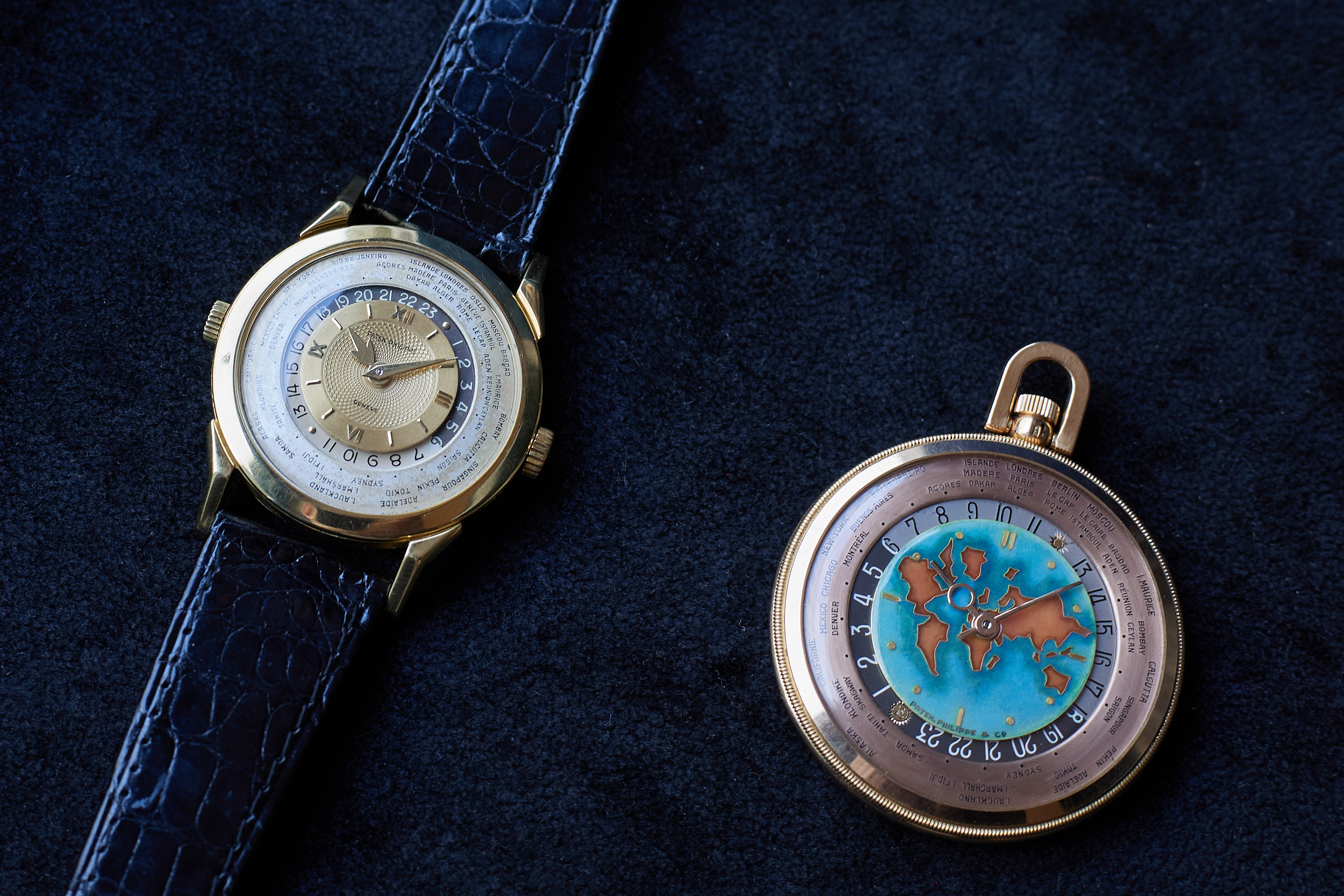We visited Antiquorum after the hectic days of Watches and Wonders to preview a few interesting timepieces before their Spring auction in Geneva. It will be held on Sunday and Monday, May 14-15, 2023 at the Hotel Beau-Rivage.
UPDATE – Antiquorum announced the results of their recent auction, which generated a total of CHF 10,301,750 in sales (including buyer’s premium).
After forty-something meetings, ‘touch-and-feel’ sessions and running around at Palexpo it was very nice to sit down with an espresso at the Antiquorum showroom and chat about the exciting lots of their upcoming May sale. There are more typical highlights such as the sought-after Rolex Daytona Paul Newman Panda, Ref. 6241 or an exceptional F.P. Journe Octa Jour/Nuit with a ruthenium dial, but please see a subjective selection here.
Pocket watches
Although nowadays pocket watches have a very niche and special fan base, Antiquorum offers a wide selection of these timepieces in their catalogue – like a very fine art deco pocket watch, Patek Philippe pocket watches with perpetual calendar, a stainless steel, single-button chronograph pocket watch from Alpina or noteworthy artisan pieces.
Being amazed by the miniature paintings, we selected two great examples destined for the Chinese market. Both are from around the 1820’s and if we are considering the technical possibilities of that time, these tiny paintings and the durability of the quality are even more impressive.
‘Shakespearean Tragedy’ pocket watch – Lot 329
Est. CHF 50,000 – 100,000
The ‘Shakespearean Tragedy’ by Bovet is an 18k gold and enamel pearl-set watch, made for the Chinese market. Bovet has always been associated with craftsmanship, the artisans today are also creating amazing timepieces with engraving or miniature painting.
In 2022 the House of Bovet celebrated its 200th anniversary and we had the chance to see the recreated museum place at Château de Môtiers and learn more about the history of the brand. Éduard Bovet (1797-1849), a man from Switzerland discovered the Chinese market for himself with his reliable artisan watches. He soon became very popular; the Bovet name has become a synonym for the watch in China. He, residing in Canton, established with his London-based brothers Alphonse and Frédéric and his third brother Gustave, a watchmaker in Fleurier, a general partnership with its sights set on the watch trade with China in 1822.
The movements were generally produced in Fleurier, Switzerland and the pieces were decorated in Geneva by the best craftsmen of the time, such as Jean-François-Victor Dupont and Jean-Louis Richter. The enamel back usually depicts a few themes, like landscapes, birds and butterflies, mythological and allegorical scenes or portraits.
On this piece the enamel panel is finely painted with a scene of a Shakespearean Tragedy. It has a ‘Bovet London’ signed gilt brass movement fully engraved with foliage decoration.
‘Chinese young lady dressed in formal court costume’ pocket watch – Lot 302
Est. CHF 60,000 – 100,000
The other timepiece is from William Ilbery, London, recorded as having worked from 1780, died in 1839. If you are browsing auction catalogues there are quite a few Ilbery watches made for the Chinese market. The strong commercial and diplomatic ties between Britain and the Chinese court offered the option for watchmakers to create pieces specifically for this market. These watches were signed with English names and marked ‘London’.
Lot 302 has an empire style case, which was a major phase of Neoclassical art in the early 19th century, seen in architecture, furniture, and other decorative arts. It is adorned with small round pearls on the face, the caseback and on the pendant and bow completed with blue and azure champlevé enamel decoration.
The main feature here is also the miniature painting, depicting a portrait of a Chinese noble lady on a balcony in a Chinese landscape. As I learned from Julien Schaerer (Watch Expert and Managing Director at Antiquorum Geneva) the full-figured, traditional clothing depictions were particularly rare, especially with these amounts of details. (There is an interesting example at the Bovet museum from cca 1870 of a Chinese lady, but only a face portrait.)
The auction catalogue notes that – ‘there was a lot at the Christie’s New York – Important Clocks and Watches auction (20 April 20, 1991) which is a virtual pair to this watch, depicting a portrait of a Chinese gentleman, also dressed in formal court costume (present whereabouts currently unknown). Although not a pair in the generally accepted sense (ie. the identical subject but painted in reverse), they must originally have been commissioned for the same customer and presumably the couple depicted in the portraits.’
Vacheron Constantin “222” – Lot 432 and Lot 530
Est. CHF 50,000 – 80,000 and CHF 30,000 – 50,000
The 70s was an interesting era for watchmaking, it brought along many great icons and it was the heyday of ‘integrated bracelet’ with pieces like the Audemars Piguet ‘Royal Oak’, the Patek Philippe ‘Nautilus’ or the IWC Schaffhausen ‘Ingenieur SL’.
Well known today, the 222 wasn’t Vacheron’s first integrated bracelet release. In 1975 the Maison briefly introduced the Royal Chronometer Automatic 2215 stainless steel with an integrated bracelet (please see a pic of the 2215 on the wrist of Jérôme at the end of our article here).
Then in 1977 VC celebrated its 222nd anniversary with the model ‘222’, referring to the birthday’s number. The 222 was a sporty but refined timepiece, fitted with a screwed-down bezel and case-back guaranteeing water-resistance to 120 metres. The design came from Jörg Hysek, the great and influential German-born watch designer and contemporary artist. He worked for Rolex, Breguet, Cartier, Tag Heuer and many other watch companies. He was only 24 years old, when he led the 222 project.
The barrel-shaped case, the very distinctive bezel, the fully integrated metal bracelet and sleek design (with a sleek automatic movement inside) were important elements of the now iconic 222. The firm offered this watch in two sizes, a mid-sized 34mm case and a ‘Jumbo’ version at 37mm.
There were all-steel, two-tone, and full yellow gold 222 timepieces – mainly with black dials but also a few examples with silver or, even less often, white dials. A little design touch completed the look – the Maltese cross emblem nestling in the right-hand corner of the case at 5 o’clock on every version.
Vacheron Constantin had the 222 in production until 1985. (Since last year Vacheron Constantin’s Historiques collection has been enriched by the 222 with a contemporary re-edition of the 222.)
At the preview we saw two Vacheron Constantin 222 lots – one is a self-winding, 18k yellow gold 222 Jumbo wristwatch with date (Reference 44018/411) from 1980. The model has the 1121 movement with the date at 3 o’clock, made on the basis of the Jaeger-LeCoultre calibre 920 (it was used for other brands’ watches at the time).
Even more interesting is Lot 530 – the reference 44518 is part of the diamond-set 222 series and was produced according to the Vacheron Constantin in 1978. While the gold version was only produced in 150 pieces, the version with the gem-set bezel and partially set bracelet is extremely rare; only a few examples have appeared on the market as of today.
IWC Reference R-148 – Lot 375
Est. CHF 6,000 – 10,000
Lot 375 was one of the most exciting timepieces to try on – not because of a super complicated movement or a fascinating provenance, but because I’ve never seen an IWC like this.
Although IWC used to be more of a masculine brand (being ‘Engineered for Men’ was the slogan in advertisements years ago), the company has been creating ladies’ timepieces since the late 1870s; feminine pocket watches and later wristwatches. The present piece is an 18k yellow gold lady’s bracelet wristwatch set with lapis, jade and tiger-eye and it truly exudes a seventies design vibe.
The small watch part houses a small (11.7 x 15mm) manual-wind calibre, the 432.
Jaeger-LeCoultre Deep Sea – Lot 23
Est. CHF 20,000 – 30,000
La Grande Maison has a few great technical models, like the Geophysic watch (which can resist physical hazards, such as extreme magnetic fields or shocks with the 478BWSbr calibre) or the original automatic alarm watch, the Memovox.
The Jaeger-LeCoultre Deep Sea was one of the first divers’ watches made with alarms, with the calibre 815. The alarm served as a signal for the diver to begin his return to the surface. The company produced the model for only 3 years, from 1959 to 1962, for a total of about 1000 pieces. There were different batches for the European market and for the American market. Pieces with ‘LeCoultre’ on the dial were typically made for the US market while watches signed ‘Jaeger-LeCoultre’ were destined for Europe.
The Memovox Deep Sea at the Antiquorum preview is the much rarer European version signed Jaeger-LeCoultre featuring triangular indexes and a tropical brown dial.
Recently discovered in an abandoned convenience store in France, the piece has been left in an as-found condition. (The model seems to have rather interesting discovery stories, as was reported here in the US.)
Photo credits: Loupiosity.com
All registered trademarks are property of their respective owners.
All rights reserved.

